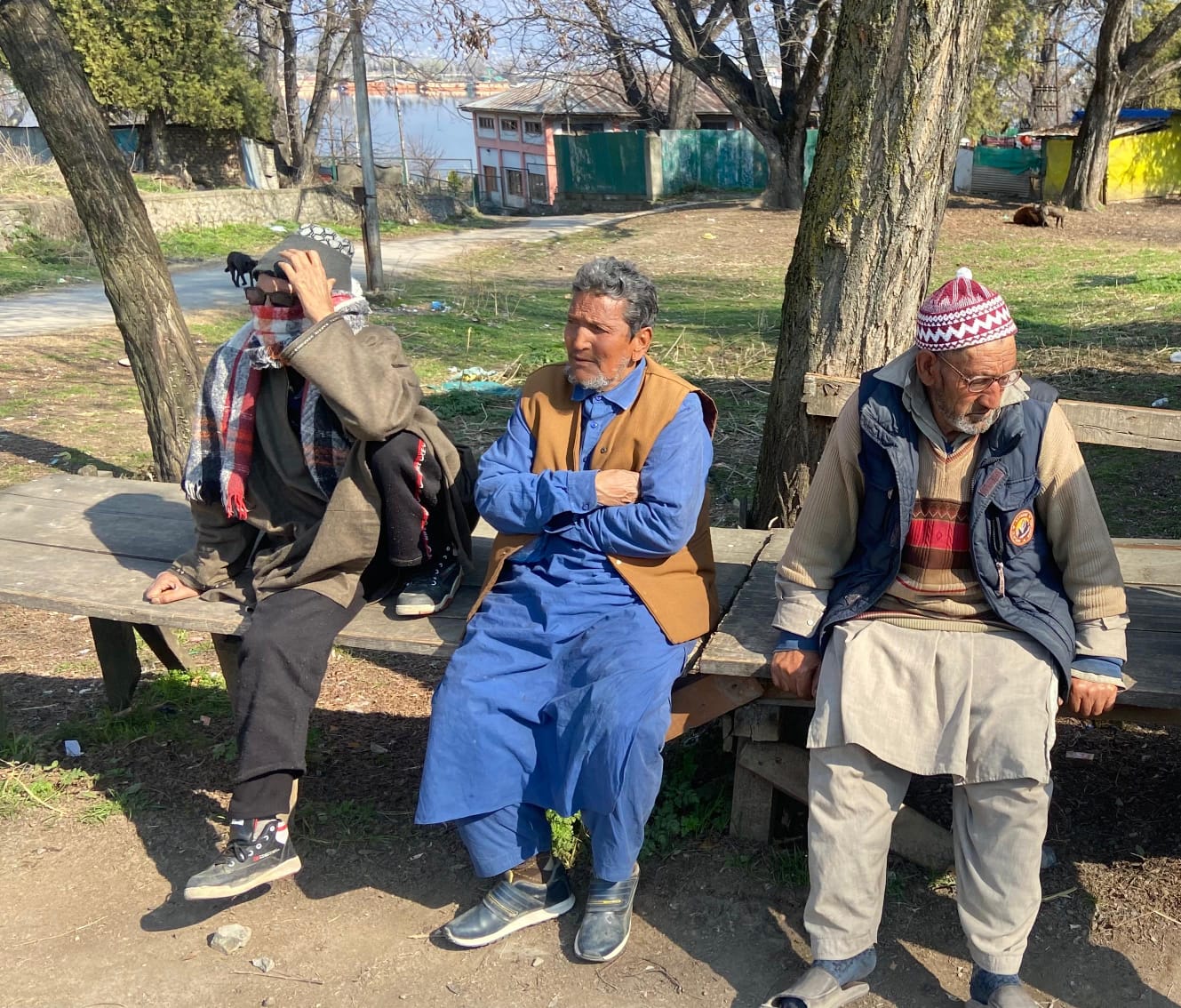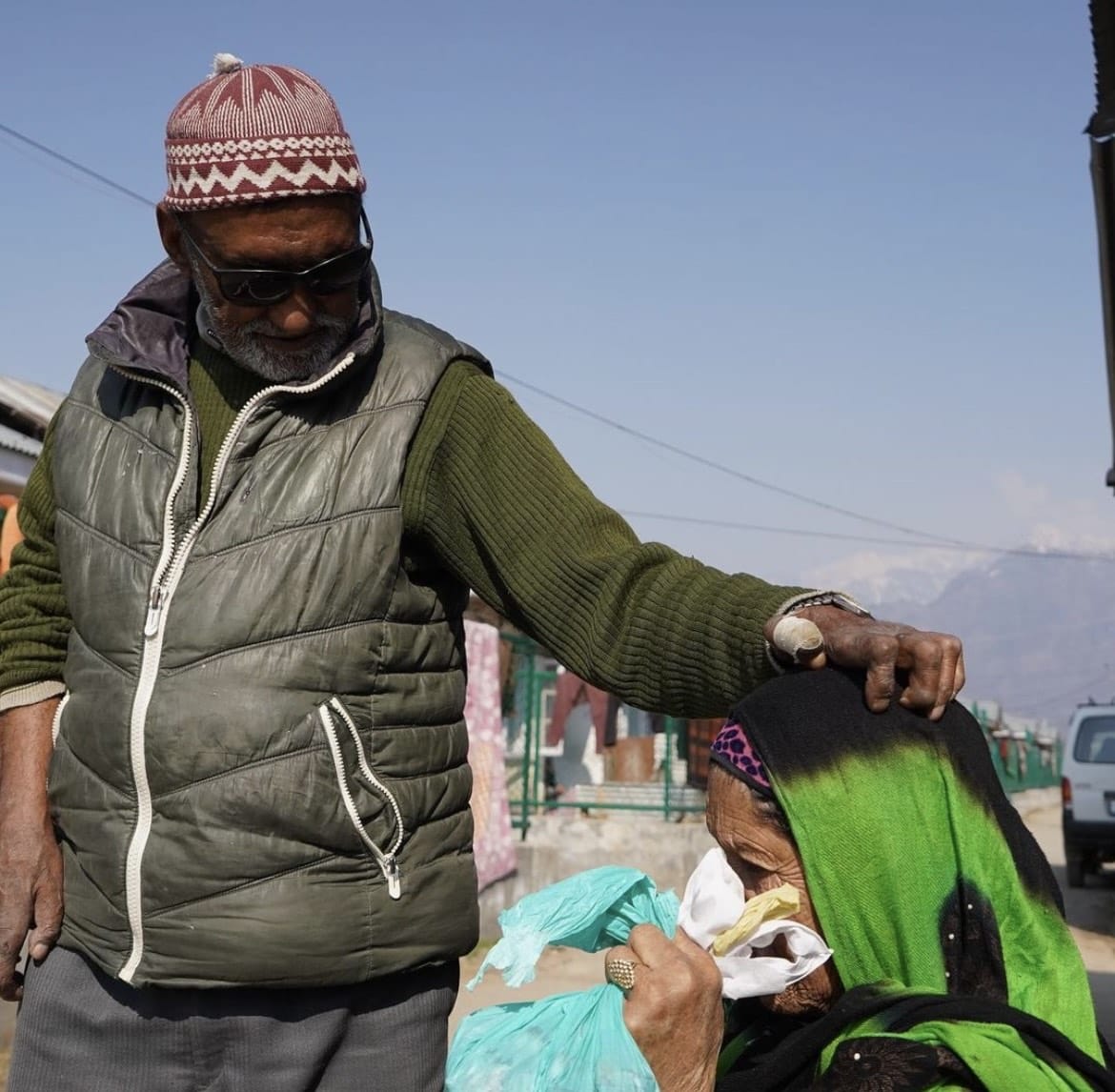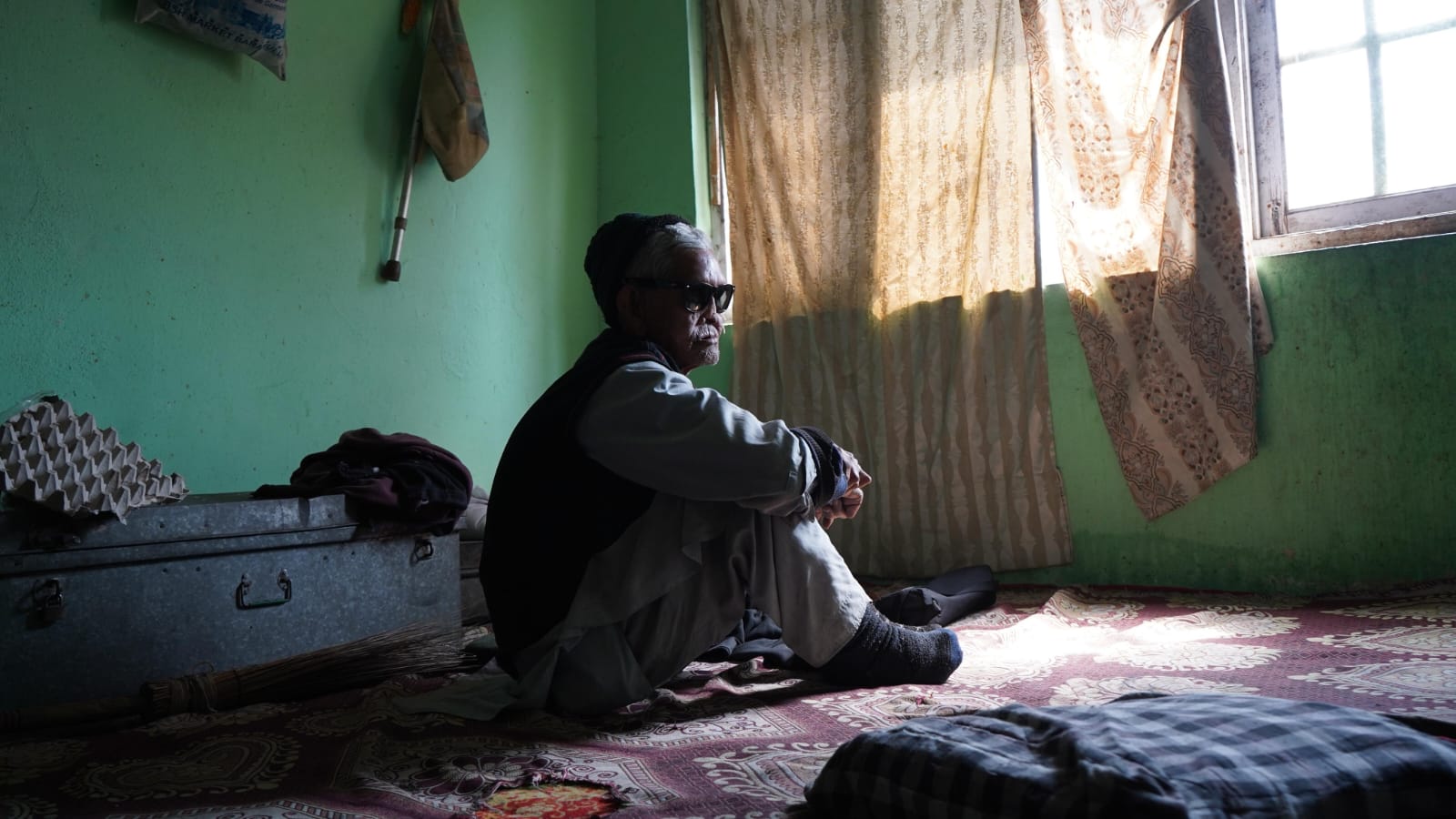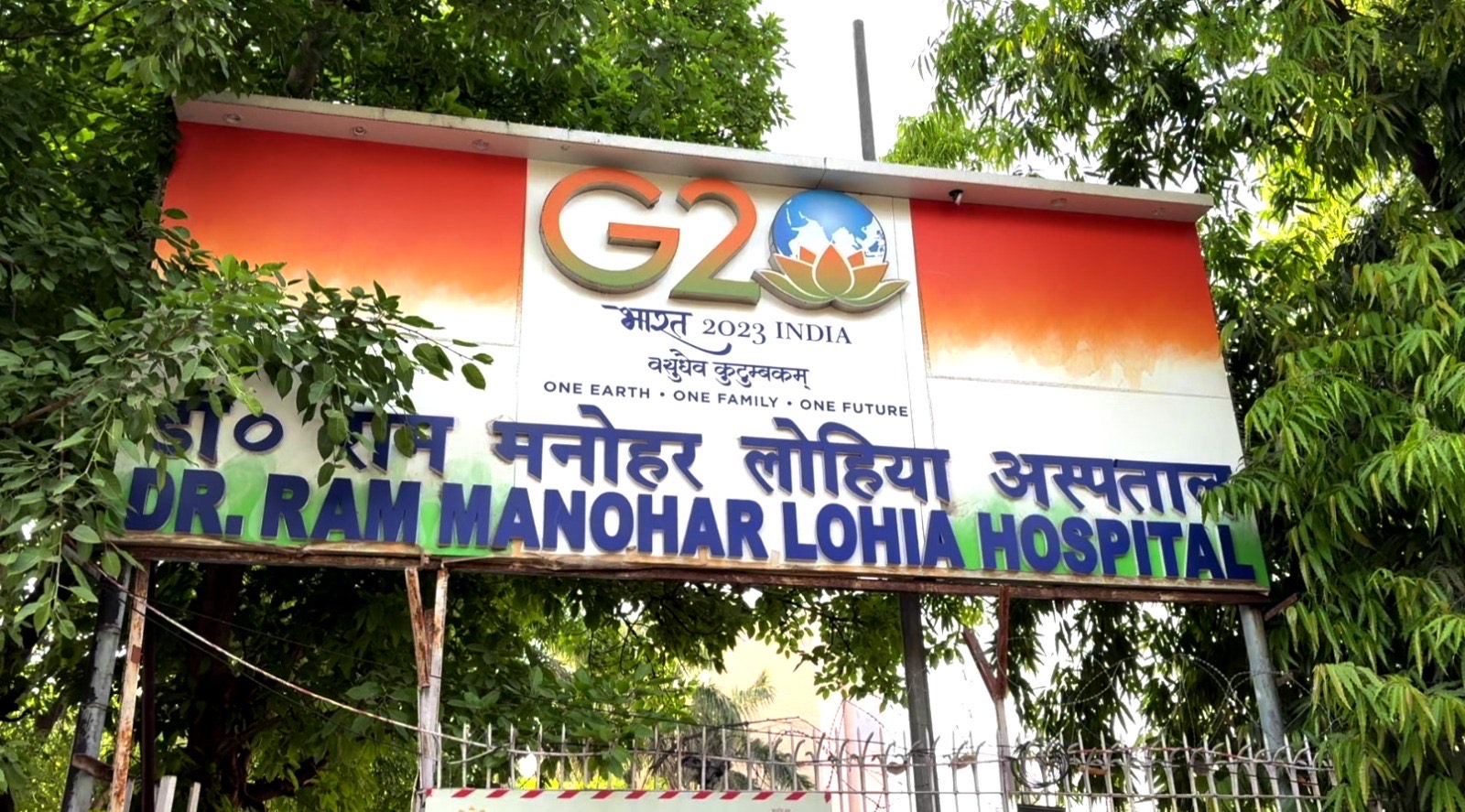On the banks of Srinagar’s Nigeen Lake lies a colony with old, crumbling structures like huts that depict tales of unheard voices, rejection, and shame. Walking through the road, FII met Shahbaz Ali Khan, a leprosy survivor who has been residing in the leper colony for 46 years. This colony has not only been his refuge but has also become the essence of his life. Initially, the leprosy hospital played a significant role in his journey, but over time, the colony has become his entire world. Here, he has forged strong bonds with fellow residents, attending their children’s weddings and celebrating life’s milestones together. The environment in the colony is nurturing and supportive.
I have lived in this colony for the past 46 years. I have recovered, got married, and started a new life. My three generations live here: myself, my children, and their children.
Shahbaz Ali Khan, resident.
Shahbaz reflects on his time there, saying, ‘I have lived in this colony for the past 46 years. I have recovered, got married, and started a new life. My three generations live here: myself, my children, and their children. We share a deep sense of brotherhood. People in the village might find it hard to believe, but here, we sit together and share jokes.’
Shahbaz’s ordeal began during his school years when he first noticed acne on his hands, followed by numbness in his legs. He initially sought treatment at the colony in 1967 for 11 months and returned in 1971 when his condition worsened. Admitted in 1971, he has remained there ever since. Reflecting on his past, he says, ‘When I was young, I had no understanding of the disease, yet I somehow contracted it. The villagers reacted with fear and exclusion, forcing me to hide. My family, unable to kill me out of mercy, concealed me instead. The lack of proper medication during this time led to severe damage to my hands and feet.’

Eventually, Shahbaz was admitted to the colony, but this marked the end of his connection with his family. He shares, ‘Even my family left me behind. They never visited. When someone did come from my village, they wouldn’t eat with us or come near us. They would greet us from a distance and then leave.’ Despite the hardships, Shahbaz has found a community and a sense of belonging within the colony, embracing a new family among those who share his journey.
Evolution of the colony
The leper colony in Srinagar, spread over 312 kanals, stands out from other areas in the city with its unique layout: single storey white apartments surrounded by old huts, hospital, a mosque and a graveyard at the far end. Situated on the banks of Nigeen Lake in Bhagwanpora Lalbazar, this colony was set up in the late 19th century by the British under the Kashmir Medical Mission.
It was intended to isolate and provide treatment for leprosy patients, a highly contagious and deadly disease that was rampant in the region at the time, after the disease was contained, the patients made the colony their home, where they found love, happiness and hope. They didn’t want to leave and made it their abode. The patients are from the rural areas of Jammu and kashmir.
Life in the colony today
Constructed in the 19th century under British colonial rule, the leper colony was established to isolate and treat patients afflicted by a deadly disease that had spread throughout the region. At its inception, the primary focus was on managing the outbreak rather than ensuring the long-term well-being of its inhabitants. However, as the years passed, the colony evolved into a community where patients made it their home. Today, it is managed by Kashmir’s Directorate of Health Services, which provides food, medicines, and clothing to the patients.

Additionally, the patients receive a stipend of Rs 1000 from the Department of Social Welfare, which they feel is insufficient. ‘Sometimes I have to buy medicines outside, which costs more than two thousand rupees,’ said a patient. ‘I can afford it, but other patients who can’t afford to buy medicines outside go without necessary treatments,’ added Abdul Zargar, another resident of the colony. The medical staff includes two doctors, several nursing officials, and two medical assistants, are all dedicated to providing care and support to the patients despite the limited resources.
Initially, 30 patients were registered at the colony, but as the years went by, it grew into a vibrant society of several hundred residents. These individuals, socially outcast and exiled from across the valley, found refuge and solidarity here. By 2000, new admissions to the colony were halted after leprosy was declared completely treatable. Although the official number of residents is listed as 100, the actual population swells to approximately 250. This discrepancy is due to the inclusion of leprosy patients’ families and the families of deceased patients.
Generations of residents
Many residents live here with their children and grandchildren, resulting in a unique multi-generational society. Most of the patients are above 60 years of age and suffer from various ailments such as blindness, paralysis, and mobility issues, often requiring the use of crutches. Despite these challenges, some patients have married and had children, who have since grown up.
The colony is now home to three generations of leprosy patients and their families living side by side. This inter generational coexistence promote a deep sense of community and shared history, transforming the colony into not just a place of treatment, but a strong and prosperous society.
However, some patients have remained unmarried. The colony is now home to three generations of leprosy patients and their families living side by side. This inter generational coexistence promote a deep sense of community and shared history, transforming the colony into not just a place of treatment, but a strong and prosperous society. This shared living environment provides a sense of belonging and mutual support, making it a unique and supportive haven for all its residents.
Stigma and isolation
Leprosy is a neglected tropical disease ( NTD) which still occurs in more than 120 countries , with more than 200000 new cases reported every year. As per the data available of 2019 WHO, Brazil , India and Indonesia reported more than 10000 new cases. Leprosy has been cured since the 1940’s but for many years afterwards , affected individuals were quarantined in places known as ‘Leper colonies’ by communities all over the world.

There are approximately 750 of these type of colonies still standing in India today, but the patients still have to deal with the stigma attached to the illness. Even the close relatives hesitate to meet them or eat with them which has left many of them deformed. Although the residents have established a distinct group with the fellow patients but the relationships with their relatives are still tense.
Leprosy is caused by the bacteria , Mycobacterium leprae, it affects the skin and nerves and if left untreated can cause permanent disability, the disease is transmitted through droplets from the nose and mouth. Prolonged, close contact over months with someone with untreated leprosy is needed to catch the disease , the disease is not spread through casual contact with a person who has leprosy like shaking hands or hugging , Moreover the patient stops transmitting the disease when they begin treatment
Policy and uncertainty
The British originally built the old barracks in this colony, while the new quarters were constructed by the government. ‘We asked for the quarters to be named after us, but instead, they drafted documents stating that when a resident dies, whoever is living in their quarter must leave,’ explained Dilwar Ahmad, a survivor of the colony.
They didn’t consider where our children will go after we die. We were abandoned by our families and friends and started new lives here, growing our families. However, after our death, our families will be forced to vacate the rooms assigned to us. This thought constantly worries me
Dilwar Ahmad, resident.
‘They didn’t consider where our children will go after we die. We were abandoned by our families and friends and started new lives here, growing our families. However, after our death, our families will be forced to vacate the rooms assigned to us. This thought constantly worries me,’ he added. ‘We have been labeled as outcasts.’ This policy has caused immense anxiety among the residents, who fear for the future security of their loved ones.
A place of belonging, attachment and resistance
Now that the disease has been eradicated, the residents of this colony show a strong unwillingness to move back to their original homes. They have embraced this place as their home and intend to stay here until they die. Abdul Majid, a long-time resident of the leper colony, expresses this sentiment poignantly ‘Where would I go? I have spent my entire life here. I have seen my youth and old age within these walls. I have grown and lived my life here. Returning to the place where I was once cast out is not an option. I have nothing left there—I sold my property and other belongings, and I gave half of my property to charity. Whom would I give anything to now? I have no one. My brothers abandoned me, and that has made my decision clear.’

Majid continues, ‘My friends and family speak to me as if I am some kind of untouchable, covering their mouths with cloths when they talk to me. I have lived here, and I will die here. Even my body will be buried inside this colony.’ This deep attachment to the colony underscores their resistance to leaving, as it has become the only place where they feel a true sense of belonging and respect .



